OUR PATHFORWARD























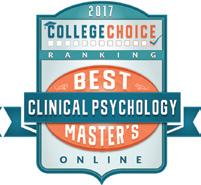

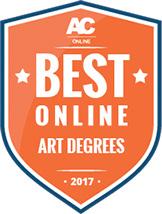
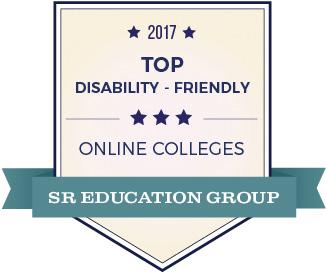


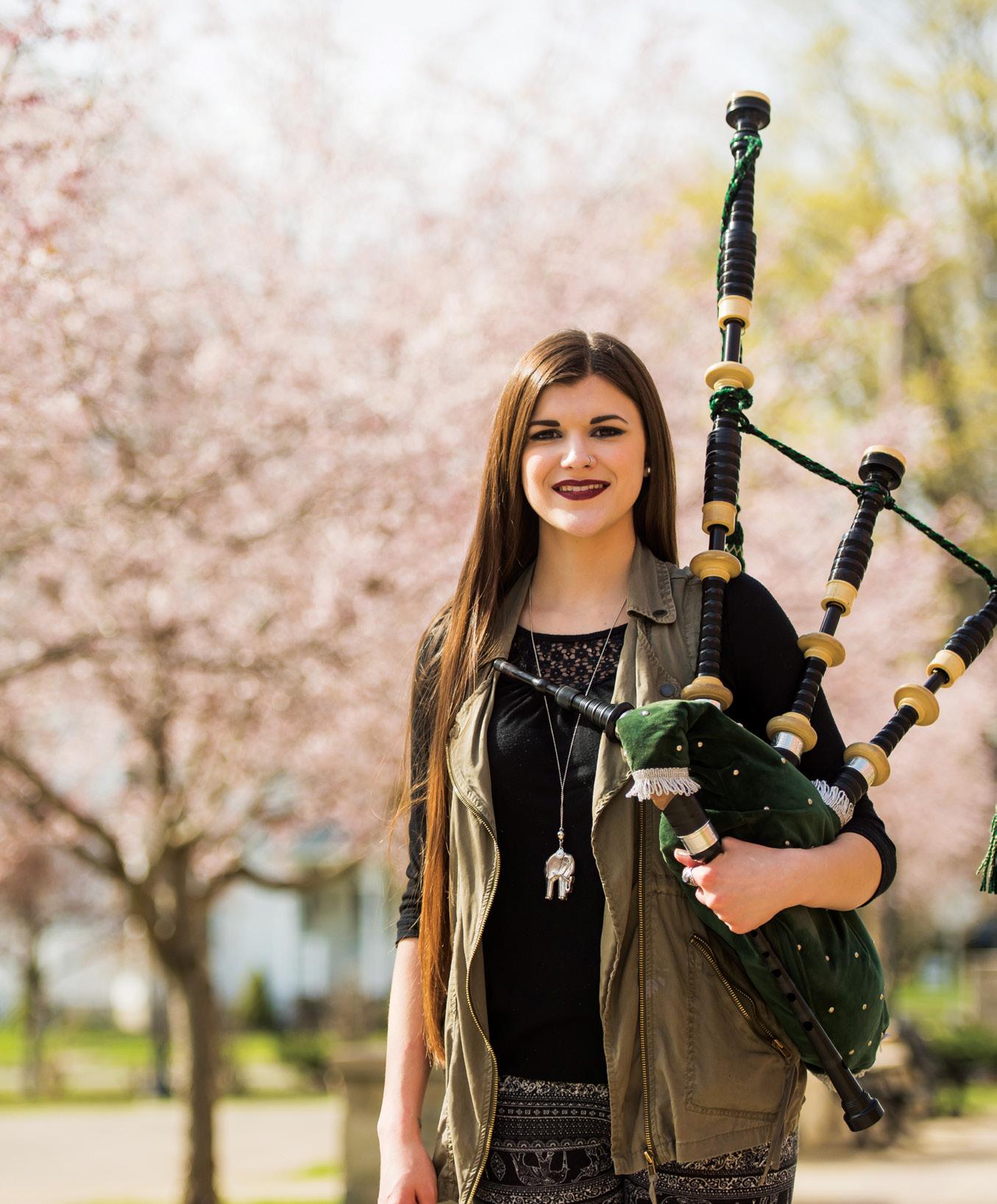

To H. Fred Walker, who has served as Edinboro University’s (EU’s) president since July 2016, there are a number of parallels between his own background and that of many EU students.
The humble beginnings, commitment and self-sufficiency apparent in many EU students are reflective of the qualities that enabled Walker, a U.S. Navy veteran, to persist and succeed as he balanced his military responsibilities with academics. In fact, it was the drive and self-discipline so characteristic of EU students that ultimately led him to a college presidency.

The son of a U.S. Air Force master sergeant, Walker was born in Florida and went to high school in Arizona. Shortly after graduation, he enrolled at a community college, but soon decided he was not ready for college. He believed he would instead benefit from the structure the military offered. Enlistment in the U.S. Navy followed and, while based at Naval Air Station Lemoore in California, he regularly made the 3-hour round-trip commute to California State University, Fresno (CSUF), where he had enrolled as a full-time undergraduate.
During nine years in the service, Walker earned both undergraduate and Master of Business Administration degrees from CSUF. A Master of Engineering in Industrial and Systems Engineering and a Doctor of Philosophy in Industrial Education and Technology from Iowa State University were later added to his curriculum vitae.
With academic credentials in hand, Walker headed east for a faculty position at the University of Southern Maine and, 13 years later, moved to the Rochester Institute of Technology, where he spent eight years as a dean. In 2016, he headed 180 miles southwest to Edinboro and his first college presidency.

Edinboro felt like the right fit from the first time he set foot on campus, said Walker, who was looking for a place that serves students like himself. He believes that every student deserves an opportunity to succeed and is ultimately responsible for his/her success, but it is the responsibility of colleges and universities to prepare students for careers that fuel their passions and enable them to support themselves and their families.
Successfully preparing students for life after graduation requires an intentional, integrated college experience that combines academic rigor with quality co-curricular activities; fosters leadership and life skills; promotes wellness; and offers experiential learning opportunities through internships or collaborative research with faculty, Walker said. Educating students about institutional ceremonies and traditions is also important. An appreciation for the university’s past enables students to put their own EU experience within the context of the institution’s history, values and culture.
This intentional, integrated experience is at the core of “Our Path Forward,” a 10-year blueprint to improve the quality of student life, ensure successful outcomes, and advance Edinboro University into the future.
“Our Path Forward” was released in September 2017 and was developed with input from EU students, faculty, staff and alumni. The community involvement, a centerpiece of Walker’s leadership style, significantly influenced the final document. Although not a strategic plan, “Our Path Forward” should enable development of a strategic plan by providing direction and focus.

“While in the Navy, I experienced waves, swells and even huge storms at sea. I learned that if I looked at the waves and swells, it would make me seasick. But, if I looked out at the horizon, the waves and swells closest to me did not block my view of the horizon.
“We cannot stop looking out at the horizon. We must keep the big picture and our end goal in mind. That end goal is providing students with a college experience that shapes their own paths and leads them to fulfilling and productive lives.”
H. Fred Walker President,
It is imperative that schools like EU not only survive, but also thrive, said Walker. More than 30 percent of EU students enrolled for 2017–2018 are first-generation college students. More than 40 percent are PELL eligible, which means they come from families with the greatest financial need. Walker believes first-generation and high-financial-need families are important populations and providing access for these students is critical.
“Comprehensive, regional, public institutions like Edinboro have transformed the lives of generations of students from modest backgrounds. I had such a background.
“I pursued a career in higher education because I know how it can positively change the course of a person’s life. Work that enables us to positively impact lives is noble and can only be accomplished when all members of the community work together to best serve students.
“This work takes time, and there will be hurdles along the way,” Walker acknowledged.
“We have all the ingredients in place to be successful. Now is the time for us to use ‘Our Path Forward’ to keep us focused and moving in the right direction. We have a proud history and tremendous accomplishments; at this point, it is a matter of fine tuning the university by making data-based, studentcentered decisions.”
Recalling all the time he spent on ships, which were often in tumultuous seas, Walker painted a visual.
“While in the Navy, I experienced waves, swells and even huge storms at sea. I learned that if I looked at the waves and swells, it would make me seasick. But, if I looked out at the horizon, the waves and swells closest to me did not block my view of the horizon.
“We cannot stop looking out at the horizon. We must keep the big picture and our end goal in mind. That end goal is providing students with a college experience that shapes their own paths and leads them to fulfilling and productive lives.”
For more information on “Our Path Forward,” visit www.edinboro.edu/initiatives

EXPERIENCE consists of six critical elements, illustrated by this cube. All of the elements are closely related and must work together to maximize the student experience.
Leadership and Life Skills
Ceremony and Tradition
This intentional, integrated experience is at the core of Our Path Forward, a 10-year blueprint to improve the quality of student life, ensure successful outcomes, and advance Edinboro University into the future.



For more information, visit www.edinboro.edu/initiatives.
Academics
Successfully preparing students for life after graduation requires an intentional, integrated college experience that combines academic rigor with quality co-curricular activities; fosters leadership and life skills; promotes wellness; and offers experiential learning opportunities through internships or collaborative research with faculty.




Edinboro began as the Edinboro Academy in 1857 and built Academy Hall, which still stands today as the home of EU Undergraduate Admissions.






1857
In 1897, Edinboro became the first college in Pennsylvania to offer women’s athletics when it formed the Girl’s Athletic Association.

Edinboro celebrated 160 years at its annual holiday gathering in December. The event featured an impressive 160th Anniversary cupcake display, memorabilia from years past, and a full time-line exhibit of EU’s proud history.

In 1964, the first student radio broadcast was heard on WJKB. That same year, students were still not permitted to wear jeans to the dining hall, class or the library.

1912.
1927
1917 1887

first Highland Games & Scottish Festival began on campus in 1993 and has grown into one of the region’s most popular annual events.










Around noon on Dec. 12, 2014, a teenager discovered human remains in the woods near Economy, Pa., just north of Pittsburgh. More than three years after the discovery, the identity of the woman found is unknown.
But authorities are closer to answers courtesy of an artistic sketch and clay model of the potential victim, thanks to Michelle Vitali of Edinboro University’s Institute for Forensic Sciences (IFS).
After running out of options to determine who the woman was and how she died, police brought in Vitali to re-create the woman’s likeness. Vitali sketched the woman’s face – down to the size of the nose, ears and eyes, even the hairstyle – and then molded the face out of modeling clay.


Although Vitali’s contributions have gotten authorities closer to answers, the case remains open. However, Vitali and the IFS use experiences like this to train future forensic artists.

Edinboro University is on the cutting edge of bringing skulls and skeletons to life through artistic and anthropological methods at the IFS. Recently, the Institute obtained data files and photos of authentic skulls from the Robert J. Terry Anatomical Skeletal Collection, which features over 1,700 human skeletons that are housed at the Smithsonian Institution’s Department of Anthropology.
With these data files, Vitali and her students used traditional forensic reconstruction techniques to artistically re-create the individual skulls.
First, students reviewed the data files, which included measurements of bones in the cheeks, forehead, chin, etc. Next, they took that data and created a replica of the skull using one of Edinboro University’s 3-D printers. Finally, students took the replica and created a genuine 3-D re-creation with modeling clay.
To determine a success or failure, students compared their 3-D re-creation to the photos, which were not revealed until the entire reconstruction process was completed.
“The reveal at the end is where you can train people and determine where things went right or wrong,” said Vitali, who obtained data on six skulls from the Terry Collection to reconstruct at EU. “The reason why I chose these skulls is because they are totally rare, and we cannot do our training without them. Researchers can use older reconstructions, but who knows if they’re accurate or not?”
Launched in 2015, Edinboro’s IFS offers interdisciplinary programming and undergraduate education, including criminal justice, anthropology, science and art. EU art professor Michelle Vitali
and anthropology professor Dr. Lenore Barbian, both fellows in Edinboro’s IFS, promote faculty and student research by engaging individuals in real-world forensic projects.
“This is a fine example of where the fine arts and liberal arts specifically can be directly applied to utilitarian goals,” said Vitali, who teaches human anatomy, scientific illustration, painting and drawing at EU.
Vitali also works with Edinboro University students, who have presented their forensic work nationally. Megan Kunst, who earned a Bachelor of Fine Arts in Studio Arts and a Bachelor of Science in Art Education, used the Terry Collection skulls to compare forensic facial reconstruction in the United States with similar processes in Russia.
“She wanted to see the results and test both processes for her research project, which she published and presented at three different conferences,” Vitali said.
Barbian’s work features a precise time period that has become integral to forensic
studies and American history – the Civil War. By researching the Civil War collections from the National Museum of Health and Medicine, Barbian can review a Civil War soldier’s medical records and compare them with the bone artifacts. Barbian said forensic anthropologists can also glean biological data such as sex, age at death, race and height of the deceased individual.
“Just by looking at the bone, can you say something about it? You actually can –within certain parameters – because that work in forensic anthropology continues to progress,” said Barbian, who noted that the results of her research could have major implications on investigating child abuse cases.
Both full-time faculty members at Edinboro University and practicing researchers, Barbian and Vitali continue to examine the cross-curricular integration of multiple academic departments.
“All of the interesting work in the world occurs at the borders of these content areas – where art meets science or where
“This is a fine example of where the fine arts and liberal arts specifically can be directly applied to utilitarian goals.”
Professor Michelle Vitali, Edinboro University Institute for Forensic Sciences
art meets law enforcement,” said Vitali, who arrived at Edinboro in 1999 in the University’s Art Department.

Additionally, their continuous work and dedication to the field of forensics have significant implications for the future of historic and criminal investigations. Barbian, who has assisted in national forensic cases such as the United Airlines Flight 93 hijacking crash in September 2001 and helped train Thai pathologists following the devastating 2004 tsunami in the Indian Ocean, said that forensics has come a long way in just a few decades.
“Originally, reconstructions of skulls basically looked like mannequins,” Barbian said of early forensic recreations. “They didn’t even look human. What we’re doing is absolutely groundbreaking for this discipline.”


To learn more about the work of Edinboro’s Institute for Forensic Sciences, visit www.edinboro.edu/ifs.
With modern technology and an artistic eye, Michelle Vitali, a fellow in Edinboro University’s Institute for Forensic Sciences, can create a lifelike representation of human features through illustrations and clay. Vitali receives measurements from medical professionals and police departments, creates a replica skull with a 3-D printer, and then develops her illustrations and clay models.

Forty-eight hours after the Sept. 11 terror attacks, Dr. Lenore Barbian and members of the Disaster Mortuary Operational Response Team (DMORT) were deployed to Shanksville, Pa., to help the Somerset County Coroner identify the victims of United Airlines Flight 93. The massive Boeing 757 plowed into the grassy field at 563 mph, burying itself in the earth and leaving behind shards of debris and mangled metal. An intense fire burned, ignited by the 7,000 gallons of jet fuel that were on board.
Despite the devastation, Barbian and her team identified 44 unique DNA profiles from the wreckage – in some cases using tiny fragments of tissue and bone. Forty of the profiles were matched to the seven crew members and 33 passengers aboard the plane through reference samples provided from the victims’ family members. The four remaining profiles were determined to belong to the hijackers.
“It wasn’t until I returned home that I realized just how monumental the whole thing was,” said Barbian, a physical anthropologist specializing in skeletal biology and a full-time faculty member in Edinboro University’s Department of Criminal Justice, Anthropology, and Forensic Studies. “That case was probably the biggest eye-opener of how important forensic anthropology can be, not only to the families who lost their loved ones but also to the whole country.”
Barbian knew from an early age that she wanted to study bones. But it wasn’t until she read a module in her middle school social studies textbook about Louis Leakey, a Kenyan archaeologist and anthropologist, and his findings of fossil hominids in East Africa that she discovered the field of anthropology.
Since earning a Bachelor of Arts in Anthropology at Northwestern University and her M.A. and Ph.D. at the University of Massachusetts Amherst, she has traveled around the world to examine human remains from prehistoric, historic and forensic contexts.
“My initial interest was working with Native American populations and looking at questions of health and disease,” said Barbian, a founding fellow of EU’s Institute for Forensic Sciences. “Forensic anthropology came later for me, but it is all human osteology.”
Prior to joining the Edinboro faculty in 2006, she served as curator of the Anatomical Collections at the National Museum of Health and Medicine in Washington, D.C., and as physical anthropologist for Native American Graves Protection and Repatriation Act (NAGPRA) compliance activities at the American Museum of Natural History in New York.
Barbian, along with two collaborators, received the 2013 Archivists and Librarians in the History of the Health Sciences (ALHHS) Publication Award for “Remains of War: Walt Whitman, Civil War Soldiers, and the Legacy of Medical Collections.” Previously, she was recognized at the American Academy of Forensic Sciences annual meeting with the prestigious Ellis R. Kerley Award for research excellence in forensic anthropology.
“Forensic anthropology is exciting because you’re working with real people and making an impact on their lives,” Barbian said. “It may not always be the happiest discipline because it often deals with victims of crime, but it’s incredibly important work.”
Dr. Lenore Barbian accompanied a group of Edinboro faculty and students on an archaeological field study to Blue Creek, Belize, in July 2017. During this 2-week extensive field experience, the group participated in an archaeological excavation of monumental architecture and elite household groups at Xnoha and also took a day trip to Lamanai.

With scuba training and a passion for archaeology, Detroit native Jennifer Martin is taking a deep dive into Edinboro University’s forensic anthropology program.
Since arriving in the Erie County area in December 2013, Martin has already made a name for herself as a forensic anthropology student and artist. It all started when her partner, Adam Stanisz, accepted a position as the chief shipwright of the Flagship Niagara, an Erie-based replica ship from the War of 1812. The pair decided to make the move from their residence in Portland, Ore., to Erie – a move that also allowed Martin to discover the anthropology program at EU.
“I had already planned on going back to school to study anthropology and

archaeology – my lifelong passions,” said Martin, who is also working toward a minor in archaeology. “I am very glad that I chose Edinboro. The education and experiences I’ve received have assured me that this is the path I was meant for.” Martin didn’t wait for her moment to arrive. Instead, she used her connection with the Flagship Niagara and the Erie Maritime Museum to initiate her historical and archaeological study of Lake Erie. After earning her scuba certification, she began exploring Lake Erie below the surface. In conjunction with her studies, Martin attended a course in underwater archaeology survey techniques, which features presenters from the Pennsylvania Archaeology Shipwreck Survey Team (PASST).
“I have stayed involved with PASST and am going to be their illustrator for shipwrecks and artifacts,” said Martin, who is currently showcasing her work at the Tom Ridge Environmental Center in Erie. At Edinboro University, Martin has continued her cross-curricular and interdisciplinary academic career, studying forensic anthropology, the history of food in various cultures, and artistic illustration.
“She has just really taken off as a student-anthropologist and artist,” said Dr. Lenore Barbian, professor and director of Edinboro’s anthropology program. “She has hit the ground running and now is focused on graduate school and continuing her underwater studies.”

Not only has Martin found her niche with underwater archaeology, she has also

Relocating from Detroit to Edinboro, Jennifer Martin has found her way into Edinboro University’s forensic anthropology program after navigating many of life’s twists and turns. Martin recently traveled with EU’s Institute for Forensic Sciences to Belize for the international Maya Research Project, where she completed 65 forensic illustrations.
excelled with land-based projects as well. This summer, Martin joined a team of Edinboro students and faculty, including Barbian and Michelle Vitali, who serve as fellows for the Institute for Forensic Sciences (IFS), on a trip to Blue Creek, Belize, for the Maya Research Program (MRP). Established in 1992, the nonprofit project sponsors archaeological and ethnographic research in Middle America regions.
“This gave me real-world experience in all the techniques I’ve been learning in classes,” said Martin, who previously worked as a chef since 2004, when she earned a culinary degree from Henry Ford College in Dearborn, Mich. “I cannot even put into words the feeling of excavating an artifact and being the first person to touch that item in 2,000 years.”
Prior to her research at the MRP, Martin became interested in artifact illustration through an archaeology course at Edinboro University with Dr. Stacy Dunn, an instructor in the Criminal Justice, Anthropology, and Forensic Studies Department. Following that course and a scientific illustration course with Vitali,
who, along with her work in the IFS, is a professor in EU’s Art Department, Martin was thrilled to join the crew for hands-on work in Belize.
In Belize, Martin connected with Dr. Colleen Hanratty, from the MRP, to illustrate a collection of Mayan artifacts. Thanks to her outstanding work, Martin was asked to stay for an additional two weeks as an illustrator at the MRP. At the end of her MRP experience, she produced nearly 65 illustrations for future MRP publications.

“I couldn’t be more grateful for the opportunity,” Martin said. “This experience and the support of everyone at MRP inspired me to leave my job and establish an anthropological illustration business. I can’t wait to see where this venture takes me as I continue to study anthropology and archaeology.”

“I am very glad that I chose Edinboro. The education and experiences I’ve received have assured me that this is the path I was meant for.”
Jennifer Martin

Professor Michelle Vitali, an expert forensic artist and scientific illustrator, encourages her students to take part in handson research projects through EU’s Institute for Forensic Sciences.

WhenEdinboro University professor Michelle Vitali walks into her office on the third floor of Reeder Hall each day, she is greeted by the toothy grins and hollow eye sockets of several human skulls.
What may seem like a macabre scene to some serves as a source of inspiration to Vitali, who teaches human anatomy, scientific illustration, painting and drawing at Edinboro and is a founding fellow of EU’s Institute for Forensic Sciences.
A sought-after forensic artist and scientific illustrator, Vitali collaborates with law enforcement officers to create facial approximations of unidentified remains. Her work, like that of many forensic artists, is done with the ultimate goal of generating leads for police to investigate.
“There are better ways to identify remains, such as dental records or DNA, but this is like the Hail Mary pass in cases where they don’t have anything else,” she said.
Vitali, who joined the Art Department in 1999 after teaching at Pratt Institute, Parsons School of Design and the New York Academy of Art, earned national recognition in 2015 for creating a sculpture of an embalmed, severed head that was found on the side of the road in rural Beaver County, Pa.
Drawing on her skills as an artist and knowledge of anatomy, osteology and physical anthropology, she created a drawing and a clay sculpture reconstructing how the woman might have looked in life. Though the case remains unsolved, her work garnered attention from several major news outlets, including Reuters and the Washington Post.
A native of Philadelphia, Vitali earned a Bachelor of Fine Arts in Painting from University of the Arts and a Master of Fine Arts in Painting from New York Academy of Art. She also studied abroad at the Tyler School of Art in Rome.
Vitali has consulted on high-profile criminal cases across the United States and Spain. In Erie County, she served as the court artist during the legal trial of Marjorie Diehl-Armstrong, who was sentenced to life in prison plus 30 years for her role in the August 2003 bank robbery plot that resulted in the death of pizza deliveryman Brian Wells.
Although the individual cases are incredibly gratifying, Vitali said her main motivation is to advance the forensic art field by identifying reliable best practices. Her current research involves improving the efficacy of 2-D and 3-D reconstruction, which has been recognized by the American Academy of Forensic Sciences and numerous law enforcement agencies. “My greatest satisfaction is the research,” she said. “When the research gets done properly and we establish better protocols, we are able to improve the likelihood of identifying unknown individuals and ultimately help the police resolve more cases.”
“This is like the Hail Mary pass in cases where they don’t have anything else.”
Professor Michelle Vitali, Edinboro University Institute for Forensic Sciences
THE CENTER FOR CAREER DEVELOPMENT AND EXPERIENTIAL LEARNING:





 By Lindy Kravec
By Lindy Kravec

FACULTY
LEADERSHIP AND LIFE SKILLS



EMPLOYERS
STUDENTS TOOLS
EXPERIENTIAL LEARNING
RESOURCES
CAREER SERVICES
Just a few years back, career services at universities consisted mainly of resume writing tips and mock job interviews. It’s not surprising that a recent Gallup survey of 30,000 college graduates revealed that only 17 percent were satisfied with their school’s career services.
Enter a new way of thinking. An emphasis on career “education.” A push toward preparing students for jobs that match their personalities, skills and interests. And for positions that might not even exist yet in today’s workplace.
“Think of career services as a complete ecosystem that not only involves students, university faculty and staff, employers, and career development professionals, but also a new set of innovative tools and resources,” says Monica Clem, ’05, ’08, executive director of Career Services at Edinboro University.
ONLY
17% of college graduates are satisfied with their school’s career services
“It’s important for us to impact students on many levels from the very beginning of their college career,” she continues. To that end, Clem has studied industry best practices and expanded the scope of the Center for Career Development with a strategic re-brand to the Center for Career Development and Experiential Learning. The goal is to empower students by providing proactive education on career development that begins in the recruitment and enrollment process and continues throughout the students’ college experience. In the process, they will become more aware and more receptive to career options, and avoid missing opportunities that can derail their future plans.
Clem notes that this vision is carefully aligned with President Walker’s new initiative, “Our Path Forward,” because it is a true career development journey.

The changes occurring at Edinboro are a microcosm of what is happening at universities across America. There is a growing trend toward providing more personalized career services that include career coaching, hands-on experience and assessments.
Edinboro received national attention in February 2017 when Clem co-led a webinar on best practices with Traitify, a scientifically based, user-friendly career assessment tool. Through a series of simple statements and accompanying visuals, Traitify collects meaningful data about the student. The survey takes less than five minutes to complete, but provides insights into the student’s personality type, then delves into suitable work environments and possible career matches.
1. U.S. Department of Education. Institute of Education Sciences, National Center for Education Statistics
ONLY
27% of bachelor’s-degree holders work in fields directly related to their major.1
Traitify is a scientifically based, user-friendly career assessment tool. Through a series of simple statements and accompanying visuals, Traitify collects meaningful data about the student. The survey takes less than five minutes to complete, but provides insights into the student’s personality type, then delves into suitable work environments and possible career matches.
Students are not limited to their top matches, but can explore more than 1,500 occupations to see how well their personalities and interests match these fields.
“Everyone has been receptive to this tool because it captures the holistic nature of the student,” notes Clem. “It provides information similar to traditional career assessments, but is accessible immediately to the student, is easy to interpret, and integrates real-time occupational data from the O*Net database. The student sees a big picture of who they are and the many options available to them. There is no one perfect major because we are complex people with lots of interests. Seeing this can take some pressure off.”
Traitify also identifies majors at Edinboro that would best prepare the student for entry-level employment in the field, as well as careers in the region, or anywhere else the student chooses to search.


To date, 812 assessments have been completed at EU in under a year with a 98 percent completion rate. Traitify is now helping the university track those students who may need career advising services, and identify any potential retention problems.
In the summer of 2017, Clem crosstrained the Edinboro admissions staff in the use of Traitify. “Traitify is so easy to use. It’s a unique way for us to show high school students and their families that we at Edinboro are prepared to help them not only get a great education, but also find a career path that is right for them,” said Bill Edmonds, EU’s vice president for enrollment management.
Through Clem’s efforts, Edinboro is taking the lead among schools in Pennsylvania’s State System of Higher Education (PASSHE). At the Pennsylvania Council of Trustees (PACT) conference in Harrisburg in October, Clem spoke about career development innovations and enrollment management. At the Board of Governors Meeting in October, she led a roundtable discussion on how the career

“Everyone has been receptive to this tool because it captures the holistic nature of the student.”
Monica Clem, ’05, ’08 Executive Director of Career Services
812

Edinboro junior Juanita Stokes is a single mother who struggled to make ends meet even though she was working full-time in the financial services industry and was receiving regular promotions. She started college several times, then had to drop out in order to care for a family member with a health crisis.
She had one goal in mind: She wanted a job that would allow her to buy a home for her family. But without a college degree, she knew that was impossible.
Juanita researched fields that offered high-paying jobs. In 2016, she quit her full-time job, found part-time employment and childcare for her children, and returned to Edinboro to major in computer science. She thought that was a good choice for her because there is potential for a high salary and many opportunities for minority women.


There was just one hitch. By her second semester, Juanita realized this was not the right major for her. But she didn’t want to drop out of college again.
Her academic advisor suggested she go to the Academic Success Center, where she took the Traitify assessment. Within a few minutes, Juanita was matched with a career: financial planner.
Her first reaction was, “No! That’s not me!” But Monica Clem put Juanita in touch with Dr. Michael Engdahl, chair of the Business and Economics Department and professor in the Personal Financial Planning program. He talked to her about her interests and career options. In Juanita’s mind, things started to come together.
Shortly after changing her major, Juanita was invited to attend the 2017 Financial Planning Association Conference in Nashville, Tenn., where she networked with professionals and received more than a dozen internship referrals. “This was an eyeopening experience for me,” said Juanita. “Now I’m truly excited to work in this field.”
According to Clem, this is a perfect example of how the career development ecosystem leads to student success.


69% of incoming traditional-age students want help selecting an educational plan that will help prepare them to get a good job.1
Traitify assessments have been completed at Edinboro University in under a year.
development tools are integrated into every Edinboro student’s academic and cocurricular experience.
“Getting students on a well-matched educational and career pathway early in their college years allows for further development in the areas of service and experiential learning, global education, internships and other resources that help develop their professional skills and network,” notes Clem.

“If students wait until senior year to get experience in their chosen field and discover that it isn’t a good fit, they have to make tough decisions about whether to continue in that program or extend time to graduation by changing to a different major. This can feel devastating because they have to reframe their entire worldview and do not always have tools or support to make informed decisions. They have also potentially missed experiences that could have helped them network into a field that is a better fit. Imagine if they
don’t get that experience until they have already graduated – that’s why this is so important.”
There’s a logical progression of services and initiatives that keep students on the path forward. During their first year, students work with career development professionals and faculty to acquire a knowledge base about potential careers. Clem reports that classroom presentations during the spring of 2016, for example, achieved 97 percent positive learning outcomes.
The goal of the second year is to have students take ownership of their skills and abilities. During their junior year, they have more opportunities than ever to gain real-world experience through internships and professional networking.
“A college degree is important,” notes Clem. “But it is no longer an indicator of possessing skills that are required in the job
market. Employers want critical thinkers. People who are self-starters. Employees with transferable soft skills as well as hands-on practical experience.”
As seniors, students are encouraged to seize the opportunities available to them. Career fairs and on-campus employer visits are on the rise.
Instead of emailing career and internship opportunities to students and alumni, the CCDEL now posts them in a centralized portal called HirEU. The portal also matches students with jobs that match their career preferences and alerts them when new matching opportunities post.
In addition, a new campus interview program matches potential employers with qualified students. Although it has been operational for just two semesters, every employer who interviewed students through the program has hired at least one of the candidates.
Clem is pleased with the progress. She envisions more innovative services coming through the CCDEL in the future. For


NEARLY HALF of American jobs are at risk from automation and artificial intelligence, underscoring the importance of developing transferable professional skills and lifelong learning.1
The world is changing faster than ever. Job growth and expansion will occur at rates never before seen during the 21st century. In order to lead full, rich lives and be successful in the future, today’s students must have a strong work ethic and a commitment to lifelong learning. A robust career development program that begins in the first year of college puts students on a well-matched educational and career pathway.1. Selingo, J.J. (2016). There is life After college: What parents and students should know about navigating school to prepare for the jobs of tomorrow. New York, NY: Harper Collins Publisher. ISBN 978-0-06238886-5. 297 pp.
example, there’s a career development training program for graduate assistants, and a new peer learning program for undergraduate student employees.
Many of the more traditional career services, such as resume writing and interviewing tips, are now offered online, allowing students to access them at their own convenience. This also allows Clem and her staff to focus on educational and workforce development.
Clem points out that job growth and expansion are occurring at rates never seen in the 21st century. What’s more, the cost of higher education has created a demand for a strong return on investment. She believes the career development ecosystem will play a vital role in meeting that demand.
“Students who graduate from Edinboro must be positioned to lead full, rich lives and support the growth and development of the Commonwealth. One’s career path is an important determinant of the ability to lead a full life.”
LESS THAN 30%
MORE THAN 70%


17 JOBS in
5 INDUSTRIES over the course of their lifetime, according to data from the World Economic Forum and the McKinsey Global Institute.4 of
of incoming freshmen were likely to demonstrate foundational work readiness skills needed for 93% of jobs profiled in the ACT JobPro database, indicating that early career planning is needed at the college level.2
Millennials and the generation after them could have as many as
college students change their major at least once.33. U.S. Department of Education. Institute of Education Sciences, National Center for Education Statistics 2. 2017 ACT College and Career Readiness Report. 4. Ritacco, A., & McGowan, H.E. (2017, September 19). Preparing students to lose their jobs and faculty to keep theirs. Retrieved from https://www. academicimpressions.com/preparing-students-tolose-their-jobs-and-faculty-to-keep-theirs/
“Employers want critical thinkers. People who are selfstarters. Employees with transferable soft skills as well as hands-on practical experience.”
Monica Clem, ’05, ’08 Executive Director of Career Services



 By Sharon Santus and Lindy Kravec
By Sharon Santus and Lindy Kravec

Some of her family members worked in the oil refineries and steel mills of Western Pennsylvania. The economic strength of those industries and the solidly middle-class jobs they sustained have faded in the last three decades, and Clem understands the impact this has had on families from the surrounding regions. Growing up in nearby Oil City, about 45 miles southeast of the EU campus, she was a teenager when Quaker State, the largest employer in the area, packed up and moved operations to Texas.
“Many families in our area were generational oil or steel workers. For me, it was clear that our options were different. There was never any question that my siblings and I were going to college.”
Clem explains that her parents invested a lot in her education and that of her siblings. “We had so many opportunities because of their hard work and sacrifice. Music classes, sports and other activities. We were really fortunate.”
After graduating high school in 2000, Clem headed to Clarion University of Pennsylvania to study music business management. It seemed like the perfect fit –she was an accomplished brass musician who had landed top honors in the Pennsylvania State Orchestra her senior year. She took AP English classes and was dual enrolled in a local branch campus of Clarion.
She admits that her choice in major was driven largely by combining a love of music with an interest in writing and business.
“I had no idea what kind of careers it would lead to. I didn’t even think about it. It seemed like it would be easy.”
Clem would soon find out that college, and her future career path, were going to be more challenging than she had anticipated.

Clem talks passionately about guiding EU’s students toward studies they will enjoy and will lead not only to good jobs, but also satisfying lives. She wants them to explore various fields of study and eventually find their life paths.
In the CCDEL, students learn about academic departments, majors, internships and the endless opportunities a university education can offer. They have access to Traitify, an online program Clem’s brought to EU to help students align their abilities and interests with potential careers.
“I thought I knew what I was getting into when I headed off to college. After a semester, I realized that the major was all wrong for me. I hated practicing my instrument for eight hours a day. It wasn’t fun anymore.”
After a friend transferred to another college, Clem started to lose her way. Like many first-year students, she started skipping classes and studying less. Soon, she found herself in academic trouble.
“I worked part-time as a teen and through my early twenties. I was a pharmacy technician, a photo lab attendant, a fast food cashier, a waitress. I knew that dropping out of college meant that those were the kinds of jobs I would have forever if I didn’t get it together.”
After three semesters at Clarion, Clem raised her GPA high enough to be accepted as a transfer student to Edinboro University, where she enrolled in an English literature seminar course.
As Monica Clem, ’05, ’08, prepares for her next meeting with an Edinboro University student in her Career Development office, she recalls being about the same age and ready to graduate from high school. Now executive director of EU’s Center for Career Development and Experiential Learning (CCDEL), she knows that, like her, many EU students are firstgeneration college students.
She also knows many are confused about which major to choose and what career path to follow. She said it took her nearly a decade to find her career path. Her goal is to ensure students don’t need that much time to find their way.
“I am passionate about creating systems that support student development.”
Monica Clem, ’05, ’08 Executive Director of Career Services
FOR CAREER DEVELOPMENT AND EXPERIENTIAL LEARNING
“That was the class that made me realize that English was the right fit for me.” She changed her major to English literature and graduated in 2005.
Clem worked in a local marketing company for a year before deciding to return to Edinboro as a graduate student in the Communication Studies program. Over the next couple of years, Clem says her career path became clearer.
“I truly had no idea what kind of career an English major would qualify me for,” she says. “In graduate school, I learned and grew so much. I realized that I really wanted to work in higher education. I wanted to help educate others.”
Clem finished graduate school in 2008 during the worst economic recession since the Great Depression. After a 6-month job search, she worked in sales for a couple of years before landing her first role as a career advisor in a local trade school – only to be laid off two years later as part of an organizational restructuring.
“It was a couple of weeks before Christmas and I was devastated. I called my dad from my car, my cardboard box full of office stuff next to me. I was like, what am I going to do? I felt like that dream of working in higher education was over.”
Clem submitted more than 200 resumes, went on 22 interviews, and received 14 job offers the following year. “Trust me, when students tell me about their career anxieties, I get it!”
Clem admits that she doubted whether she should continue to pursue a career in higher education or move to the business sector. “I interviewed everywhere from manufacturing companies to PepsiCo to colleges and universities. I was open-minded, but ultimately I went back to higher ed.”
Over the next several years, Clem continued to grow her experience. She worked in several colleges, gaining experience in administration, advising, teaching and career development.
“As I learned more about the career development field, my core beliefs and professional motivations became clearer. I am passionate about creating systems that support student development. Career development is an area that really needs those systems.”
She considered pursuing a doctoral degree, but was hesitant to put her career on hold.
“A colleague explained to me that if I wanted to pursue this career path, a Ph.D. would open doors that a master’s degree wouldn’t. I was nervous about it and not sure it was something I could do.”
Clem says it was her parents who convinced her to take the leap.
“I had dinner with my parents and we talked about it. My dad told me that if I kept coming up with reasons not to do it, I never would.”
Now closing in on a Ph.D. in Organizational Learning and Leadership at Gannon University, Clem was hired at Edinboro to head up the Center for Career Development in 2016. Her dissertation will focus on students’ perception of their career readiness versus the perception of employers.
“Often students don’t understand what employers are looking for and how their preparation must meet employer expectations. For example, a student may not be able to see how study abroad is relevant to employers, who are operating in an increasingly global environment.”
“I get a lot of satisfaction from working with students who are really unsure about what they want to do,” said Clem. “Many students have broad interests and don’t want to pursue a single career path. They aren’t sure where to funnel their interests. I was the same. I understand what that is like.”
Juanita Stokes, a single mother of three from Erie, came to the CCDEL one day seeking help.
“Juanita had chosen one path because the pay was good and she has three kids to raise,”


“The old warning of ‘Look at the person to your left, then the person to your right. Two of you won’t be here in a year,’ doesn’t work. We shouldn’t criticize students for not adapting to our program if we’re not adapting to their needs. Refusing to change is never acceptable, and we cannot fail students. There’s too much at stake.”
Monica Clem, ’05, ’08 Executive Director of Career Services
Clem said. “And when that didn’t work out for her, she didn’t know where to turn.”
Juanita used the Traitify tool and learned that her major was likely not the best fit. Thanks to the support she received from the CCDEL and other areas of campus, Juanita now feels confident in her future. “It wasn’t long ago that someone in her situation would drop out and never return to school.”
Clem said her vision is to ensure that each EU student gets the most out of the academic experience and is supported.

“The old warning of ‘Look at the person to your left, then the person to your right. Two of you won’t be here in a year,’ doesn’t work. We shouldn’t criticize students for not adapting to our program if we’re not adapting to their needs. Refusing to change is never acceptable, and we cannot fail students. There’s too much at stake.”
Clem gets excited when talking about the future. “I am committed to growing our systems and programs to create conditions that make stories like Juanita’s more common.”
One area that she is especially passionate about is experiential learning, “Looking back, I now know that it was all of the hands-on experiences – all those part-time jobs, getting laid off, graduating during a recession, interviews across multiple industries, that helped clarify my path. It is critical that students get experiences that help them grow and figure out what is best for them.”
She is also interested in harnessing the power of mentoring, “I had a lot of professional mentors along the way, and I wouldn’t be where I am now without them. I believe that we can find ways to connect students with professionals earlier – before they enter the workforce.”

“I always say that higher education is not about getting a job – it’s about living a fuller life. Your career is a huge part of that life, and even though we can never tell a student exactly how things will evolve and change when they leave Edinboro, we can help create a solid foundation for them to launch.”

“Many students have broad interests and don’t want to pursue a single career path. They aren’t sure where to funnel their interests. I was the same. I understand what that is like.”
Sitting on the sidelines at the Erie Insurance Arena, Edinboro University alumnus Sean Peebles has watched hundreds of minor league basketball players chase their childhood dreams of playing in the NBA. Some of the young athletes get the life-changing callup. Many of them don’t.
After nine seasons with the Erie BayHawks, the NBA G League affiliate of the Atlanta Hawks, Peebles has finally realized his own NBA dream. But it isn’t his name that you’ll hear booming over the PA system at Cleveland’s Quicken Loans Arena. It’s his voice.
Peebles (pronounced “pebbles”) made his debut as the Cleveland Cavaliers’ publicaddress announcer at the team’s home opener on Oct. 17, 2017. In this position, he is responsible for delivering pregame introductions, calling the game action, and making necessary announcements at all home games. He also plays a critical role in raising the level of enthusiasm in the stands.
“Getting a chance to take my energy and excitement into the chair every single game and sharing it with 20,562 people is unbelievable,” said Peebles, who graduated from EU in 1996 with a Bachelor of Arts in Speech Communication. “When LeBron goes in for a dunk, we’re all feeling the same emotions.”
Joining the Cleveland Cavaliers organization has been a dream come true for Peebles, who attended his first Cavs game with his stepfather at the Richfield
Coliseum when he was just 11 years old. He has been hooked ever since.
“First and foremost, being one of the fans in the building is an honor. Over the years, I always said that I just wanted the chance to announce one game here at Quicken Loans Arena,” he said. “Now I get to do them all.”
Peebles, who lives in Erie with his wife, Susan, and their four children, auditioned twice in the arena before being selected from a talented pool of candidates. He was having lunch with a friend when he got the call.
“I went through a range of emotions those first few seconds after they offered me the job,” Peebles said. “It’s just absolutely incredible. Of all the people that could have been picked, I can’t believe that I get the chance to do this.”
His first opportunity to call a basketball game came in February of 2010 when he was working as a senior account executive in the Erie BayHawks front office. The regular PA announcer called off, and Peebles was asked to fill in for the night. Later that year, he was named to the position permanently.
“I had been hinting around about wanting to get on the microphone, and they finally gave me a chance,” Peebles said. “Without that opportunity, I wouldn’t be where I am today.”
Growing up in New Castle, Pa., Peebles has always had a passion for music and entertainment. Like many teens in the late 1980s and early ’90s, he used his boombox to record personalized mixtapes.
“Back then it was a mixture of things like Def Leppard, Poison, Bon Jovi and Skid
“It’s just absolutely incredible. Of all the people that could have been picked, I can’t believe that I get the chance to do this.”
Sean Peebles, ‘96

Row,” said Peebles. “Music has always been a true passion for me. I became interested in radio because I wanted to play music and entertain people.”
He got his start on the mic as a radio personality for WFSE-FM, EU’s studentrun radio station. His first shift was an R&B and hip-hop show called “Strictly for the Streets.” Later, he picked up an alternative shift on Wednesdays, playing music from groups like Foo Fighters, the Smashing Pumpkins and the Nixons.
“Edinboro is known for having one of the best campus radio stations in the region, which was my primary driver for enrolling,” he said. “When I got my first shift here at Edinboro, everything just kind of took off after that.”
Peebles was a 3-year member of EU’s track and field team, competing in the javelin under Coach Doug Watts. He also played intramural basketball and softball and worked as a disc jockey at the Edinboro Hotel.
After graduation, Peebles owned a mobile DJ company for eight years, spinning records at school dances, weddings and birthday parties.
“Being in radio is a little different because it’s just you, the studio and the microphone,” he said. “The conglomeration of being on air and the public speaking courses I took at Edinboro really enabled me to get comfortable in front of people.”
On game days, Peebles makes the 90-minute drive down Interstate 90 to assume his courtside seat at Quicken Loans Arena – a seat he wouldn’t trade for any other in the world.


“People always ask me what I would do if the Lakers called and offered me a job, but it wouldn’t be the same. I’ve been a fan of Cleveland my whole life, and I can’t imagine myself doing this anywhere else,” he said. “There is no other team.”
Reflecting on his journey, Peebles has some words of encouragement and advice for current Edinboro students pursuing a similar career path.
“Put yourself out there and meet people,” he said. "Never be afraid to introduce yourself to someone that you don’t know. Step out of your comfort zone. If you want something bad enough and you believe in your abilities, give it a shot.”
“Never be afraid to introduce yourself to someone that you don’t know. Step out of your comfort zone. If you want something bad enough and you believe in your abilities, give it a shot.”
Sean Peebles, ‘96
Football athlete
Middle-level math and special education major ROTC cadet

Dr. Joseph Laythe Award winner for championing social justice
Allstate AFCA Good Works Team national selection
Academic All-American

Ryan Stratton, ‘19, loves the roar of the crowd at Sox Harrison Stadium, but the cheers of a special group of kids might be his favorite sound of all.
On the football field, Stratton appeared in all 11 games as the team’s starting tight end. He caught his first career touchdown pass in his final game against Cheyney. Although he has found success on the field, his most significant accomplishments won’t be found in any athletics record book.
One of Stratton’s most high-profile achievements was introducing the 12th Man Tradition to Edinboro last fall. The tradition brings students with disabilities and children battling cancer to the sidelines of home football games and into the locker room with the team.
A Smethport, Pa. native, Stratton, who currently holds a 3.85 GPA, is humble and quick to credit his teammates and the Fighting Scots football program with the immediate success of the 12th Man Tradition.
“We chose a kid for every home game, and they came on Friday night to our team meetings,” he said. “When they arrived, they would get a signed football from all of the players and also an Edinboro football shirt. They would come back on Saturday and stand on the sideline for warmups and the game. They actually ended up cheering louder than some of our players.”
After the season ended, Stratton planned a banquet for 12th Man participants to bring them together with his teammates one additional time. Parents who attended were effusive in their praise for what Stratton did for their children, but he insisted he actually benefited significantly from the experience. He said that it inspired him to realize there is more to life than just football and getting an education.

“Reaching out to the community and using the platform that I have been given has been a tremendous experience for me,” Stratton said. “It has been amazing to see the guys on our football team interact with the kids when they come to team meetings and games.”
Last spring, Stratton completed his field-teaching experience and worked with a local school district for pre-service teaching. Expected to graduate in 2019, he said the field experience was the toughest and most rewarding experience of his time at Edinboro so far.
“You are basically starting to become the teacher and taking control of the classroom,” he said. “The EU education program is wonderful and challenging, but if you are passionate about teaching and kids, as I am, then it is great. Also, the professors in the School of Education truly care about their students.”
In addition to football and community service, Stratton participates in EU’s growing ROTC program, through which he has signed a contract to continue service as an Army officer upon graduation. A devout Christian, he also is involved in several church groups and Bible studies, including Fellowship of Christian Athletes, the Edinboro chapter of the campus ministry Chi Alpha, and Campus Crusade for Christ worship services.
“Edinboro University has always pushed me and provided me with a lot of wonderful opportunities,” Stratton said. “Every campus runs the same, but it’s the people who make the difference. The people at Edinboro are truly what have helped me focus on my goals and reach my highest potential. They have always pushed me to do my best and always given me guidance and direction.”
And what is next for Stratton after his busy time at Edinboro University comes to an end?
“I plan on commissioning as an aviation officer in the U.S. Army to travel and gain leadership skills,” he said. “After the service, I think one of my dreams and goals has been to start a charity for kids battling cancer and kids with disabilities. I really have a heart for kids, and this is something that I would love to do the rest of my life.”
University has always pushed me and provided me with a lot of wonderful opportunities.”

Games Played: 33
Offense (Tight End)

Receptions: 4
Yards: 23
Touchdowns: 1
Defense (Outside Linebacker)


Tackles: 30
Tackles for Loss: 2.5
Passes Defended: 2
“Edinboro
Ryan Stratton, ‘19
For nearly four decades, Patrick J. Santelli, ’62, woke up at 5:30 a.m. – sometimes seven days a week –for work as manager in the Pfizer, Inc. organization. After retiring in 2000, Santelli wakes just a half hour later to get started on his busy schedule.
But before heading out for a tennis match or to help his neighbor shovel snow, the Edinboro University graduate stares into a small photograph on his desk –behind his computer monitor next to his bulletin board.
This photograph, which changes each year, features Edinboro students who receive scholarships from the Santelli Diversity Endowment – created by Santelli and his wife of 53 years, Patricia Santelli.
“I can look at this photo and see the students that I am able to help,” said Santelli, who earned a Bachelor of Science in Secondary Social Studies and an Honorary Doctorate of Public Service from EU in 2010. “When I see the picture three or four times a week, it becomes really motivational to me. I’m helping somebody.”
First awarded in 2001, the Santelli Diversity Scholarship promotes educational access with preference to diverse groups such as racial and ethnic minorities, single parents, nontraditional students, and individuals with learning or physical disabilities. With the overall endowment valued at $250,000, the individual scholarships may be applied to a student’s tuition, room and board, and fees as long as the scholarship student maintains a high level of academic standard and personal behavior within four years.

First awarded in 2001, the Santelli Diversity Scholarship promotes educational access with preference to diverse groups such as racial and ethnic minorities, single parents, non-traditional students and individuals with learning or physical disabilities.
“I believe that the only way for people to get ahead in this world is through education,” said Santelli, the vice chairperson of the Edinboro University Foundation, member of the President’s Advisory Council and advisor to the School of Business.
Through his education at Edinboro, and his postgraduate studies at the University of Pittsburgh, Santelli remained committed to his goals through persistence and hard work. A lifelong educator, Santelli – now 77 years old – explained that preparation was the key to his success.
“On Sunday nights, my neighbors knew never to call me for a party or dinner, because I’d be in my office preparing for my entire week,” he said.
Whether serving on the Board of Directors for the American Heart Association of Western Pennsylvania and the American Diabetes Association or guest lecturing at EU’s School of Business, Santelli continues to preach hard work and dedication.
“God has blessed me with what I needed to accomplish my goals,” said Santelli, who was honored for being the first Pfizer sales manager to reach $10 million in sales and the first of two to reach $100 million. He was his division’s representative on the corporate Diversity Committee, which organized a program course for Pfizer employees. “I like to share those gifts with people who are less fortunate.”
What is Santelli’s advice to graduates who are entering their career field?
“The first thing you do is establish longterm relationships. Good listening skills are vital to this goal,” he said. “Then you need to make sure you are supporting other people and adding value. Always strive to do the best at what you love. And have fun.”
Patrick and Patricia Santelli, who reside in Allison Park, Pa., in Allegheny County, have two children, Julie Lynn Santelli, M.D., a radiation oncologist in California, and Michael Stuart Santelli, senior-level executive in the Washington, D.C., area.
To learn more about how Edinboro University alumni give back to EU students, visit www.edinboro.edu/support.
Van Houten, EU’s main dining facility, got a facelift during the fall semester and has reopened for the spring. The $900,000 project included cosmetic improvements to the 345-seat facility, including new flooring, new furniture, the addition of a media lounge, as well as space to showcase student-produced art. Chartwells, the university’s food-service vendor, has also made changes to its menu options and services, including:
• Gluten-free stations
• More vegetarian offerings
• Healthier options
• “Action stations” for omelets, stir fry and a panini bar
• More farm-to-fork offerings, featuring locally grown produce
• Caribou coffee

A $16 million renovation project for EU’s Baron-Forness Library has been approved. Work on the seven-story structure will begin during the 2019–2020 academic year and is scheduled for completion during 2021–2022. Improvements will include:
• More collaborative work space for students
• Innovation Beehive space, where students and faculty will work with local businesses on marketing and communications plans. Aimed at driving economic development in the region, the Innovation Beehive is a joint initiative involving a partnership between EU, Penn State Behrend, Gannon and Mercyhurst Universities. EU’s contribution to this initiative stems from the strength of its communications program.
• New circulation and information desks
• Updated electrical, plumbing and mechanical (HVAC) systems

“I believe that the only way for people to get ahead in this world is through education.”
Patrick J. Santelli, ’62
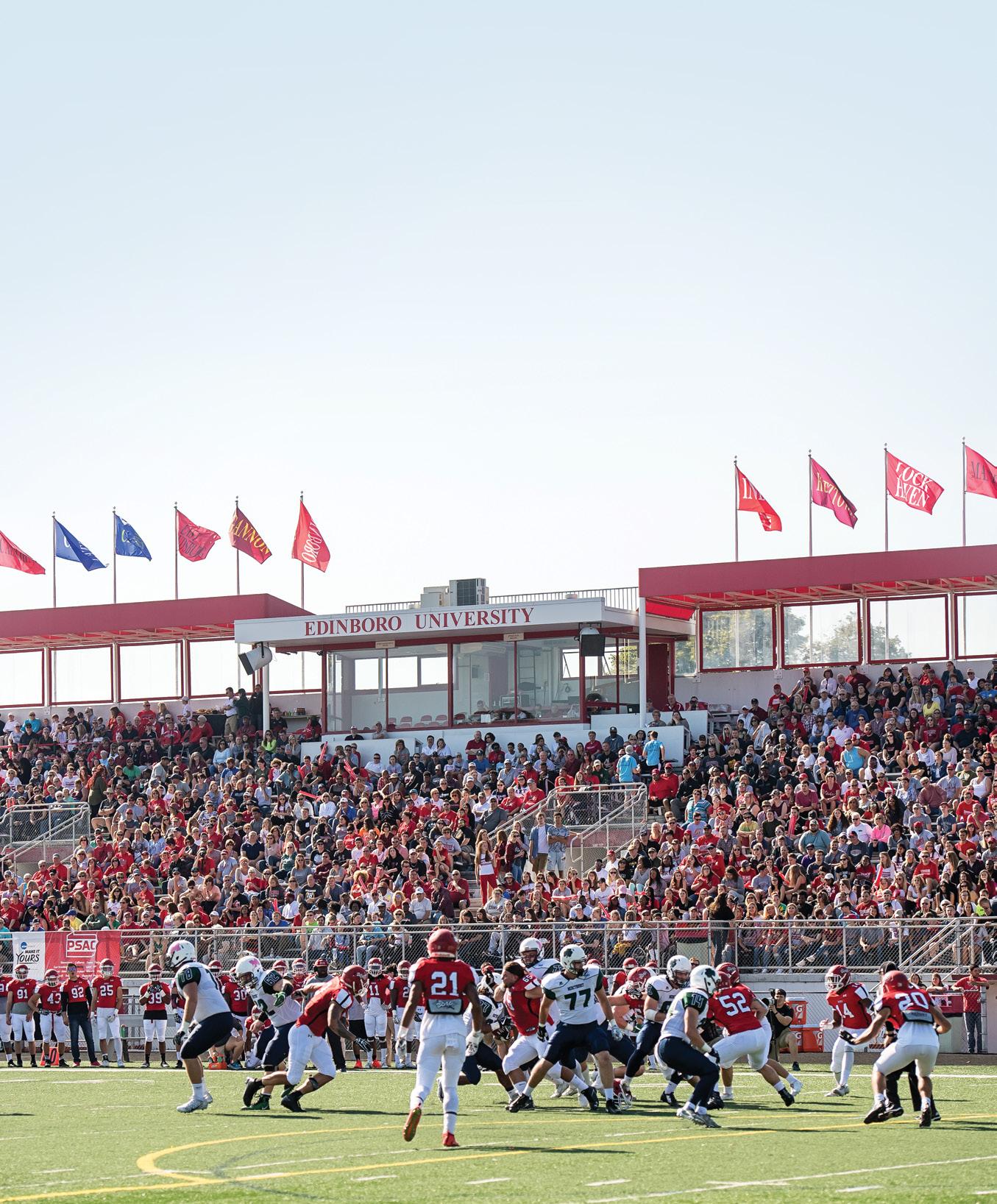

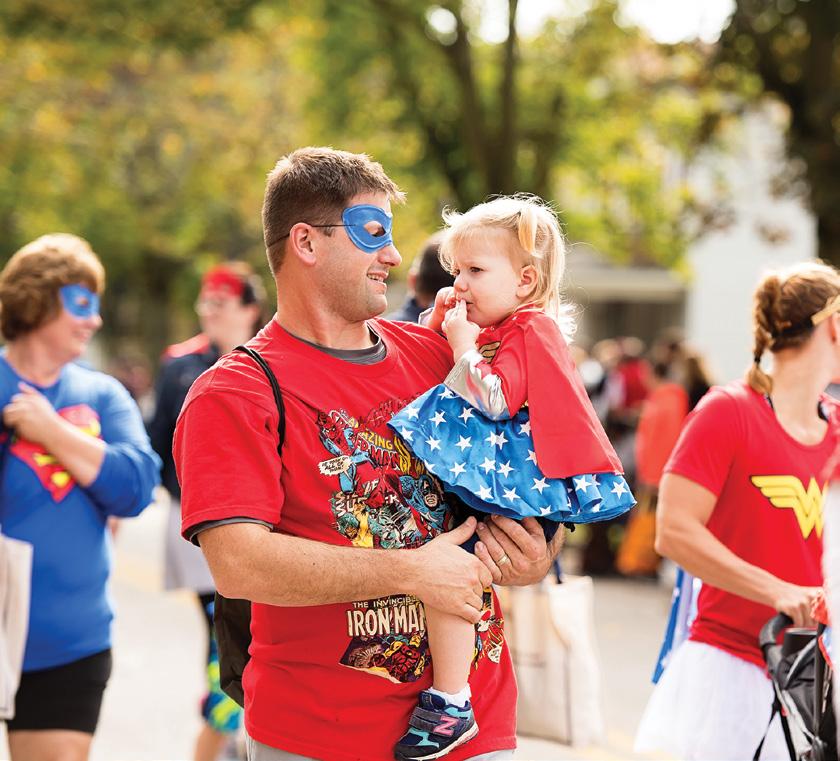


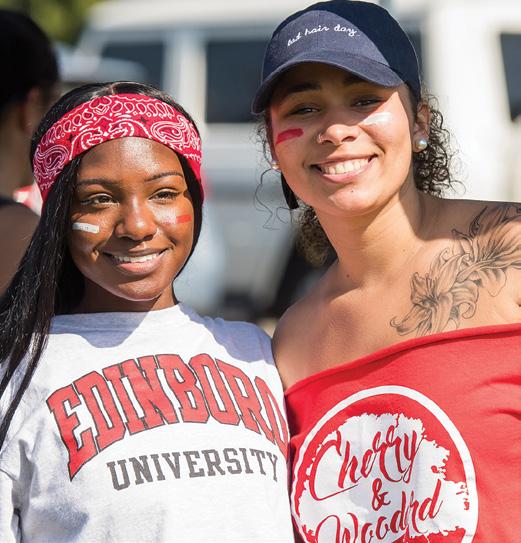
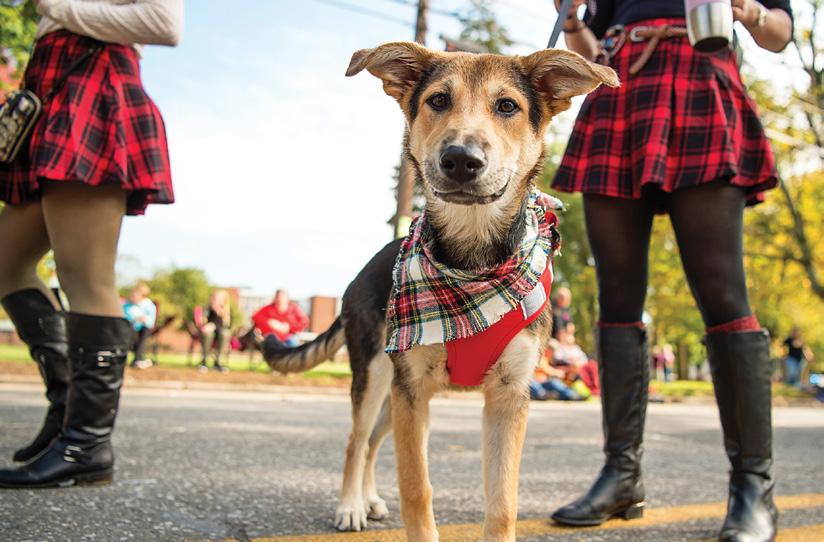
Edinboro University will soon offer an MBA.


Tentative plans call for a January 2019 launch date.
The Master of Business Administration (MBA), which builds on the University’s highly regarded Bachelor of Science in Business Administration, will offer a different perspective on business decision making.
The program, which may be completed in as little as a year, will be delivered in a blended hybrid format, allowing students to take courses both face-to-face and online. The online courses will be delivered synchronously or asynchronously, allowing students to start the program at various times throughout the year.



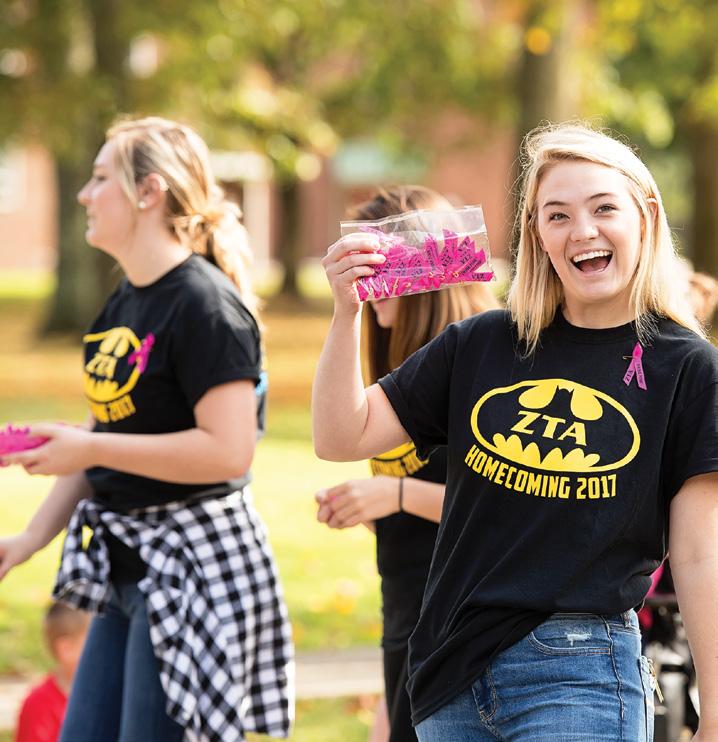
196 0s
1963 | Dr. Thomas A. Jambro was appointed to the board of trustees of the Burchfield Penney Art Center on the campus of SUNY Buffalo State. Jambro is a member of many art institutions, including the Castellani Art Museum and the Art Gallery of Ontario. Dr. Jambro resides in Derby, N.Y.
1964 | Stuart Thompson and his wife, Nora, were showcased in a dual exhibition of their artwork at the Southern Alleghenies Museum of Art at Ligonier Valley. The exhibition featured 32 oil on canvas paintings and 19 clay works by Stuart and 45 acrylic paintings and graphite and colored pencil drawings by Nora.
197 0s
1971 | Tony Buba appears twice in a list of the 10 best films to be filmed in Pittsburgh: at No. 7 for “Dawn of the Dead” (actor, sound engineer) and at No. 9 for his film “Lightning Over Braddock: A Rustbowl Fantasy” (actor, writer, editor, producer, director).
1975 | Theodore “Ted” Headings recently retired to Tucson, Ariz., following a legal career that encompassed commercial real estate, corporate and banking law in Dallas. The majority of his career was in the commercial real estate brokerage industry with the global firms of Cushman & Wakefield and Jones Lang LaSalle.
1976 | Ambassador Umaru Bundu
Wurie is in the race to lead his political party, the Sierra Leone People’s Party (SLPP), and become its national presidential candidate in 2018. The former Sierra Leonean ambassador to Germany, Saudi Arabia and other countries, he also served as deputy humanitarian coordinator for the United Nations in Iraq and as an executive board member of the World Food Program in Central America.
1976 | William Rothenbach was recognized by the University of Maryland Baltimore County (UMBC) for his work on the Advisory Board for its Industrial-Organizational Psychology undergraduate degree program. He is the chief human resources officer for J.J. Haines & Co., the largest flooring distribution company in the United States. Rothenbach established the William Rothenbach Psychology Scholarship. He lives in Bel Air, Md., with his wife, Christine.
1977 | William R. Jacobs Jr. was selected to present the Russell Marker Lectures in Genetic Engineering at the Pennsylvania State University. Jacobs is a professor of microbiology and immunology and professor of genetics at Albert Einstein College of Medicine as well as a Howard Hughes Medical Institute investigator. He lives in Pelham, N.Y.
1978 | Kathryn (Urik) Bowles, who earned her Bachelor of Science in Nursing from Edinboro University, has been selected for induction to the International Nurse Researcher Hall of Fame. Bowles is a
professor of nursing at the University of Pennsylvania School of Nursing and resides in Fort Washington, Pa.

1978 | Richard Stanzione, president and CEO of R&R Group Insurance Services, was elected to the board of directors for the International Association of Registered Financial Consultants (IARFC). Stanzione and his family reside in Ogden, Utah.
Andrea Stevenson Conner, ’87, is executive director of ATHENA International, which seeks to support, honor and develop women leaders. In addition, she is the board vice president of Sias International University Foundation and a governing body board member for the Raleigh Chapter of the U.S. National Committee for UN Women. She is a consultant for the World Academy for the Future of Women and previously worked for UN Women Beijing. She resides in North Carolina.
1980 | MaryAnn (Tausch) Hewston is Meadville Medical Center’s chief nurse executive, responsible for overseeing all of nursing and its operations. She has been on the Pennsylvania State Board of Examiners of Nursing Home Administrators since 2009. Hewston lives in Conneaut Lake, Pa., with her family.
1991 | Kris (McQueeney) Hunt, CPA, has been named chief administrative officer at the Erie law firm of Knox McLaughlin Gornall & Sennett P.C. In this new role, Hunt will oversee all administrative operations of the firm and ensure that the operations of the firm align with its overall goals. Kris resides in Edinboro with her husband, David.
1992 | Shannon (Simmons) Vitovich, RN, has been named Cardiac Catheterization Lab manager for the new facility at Chan Soon-Shiong Medical Center at Windber. Vitovich Lives in Johnstown, Pa., with her husband, David.
Emil Lukas, ’86, earned recognition for his artistic display at the Governor’s Residence in Harrisburg, Pa. The exhibit celebrates the history and diversity of Pennsylvania. His “thread paintings” are made by stringing thousands of feet of thread across a framed wooden box, highlighting optical effects of luminescence and volume. Lukas resides in Stockertown, Pa.
1998 | James Michael Shoberg is writing, producing and directing the official world premiere stage adaptation of the classic 1985 horror film “Fright Night.” He is an internationally produced playwright and horror poet, award-winning actor and co-executive producer/artistic director of the longestrunning self-funded fringe theatre company in Pittsburgh.
2000 | Dr. Brittany Rowe-Cernevicius was one of nine selected for the Fellowship for Educators program of the Plank Center for Leadership in Public Relations. She is an assistant professor of public relations at Westminster College and lives in New Castle, Pa.
Dr. Richard B. States, ’96, was selected by the University of Findlay to serve as interim dean for the College of Health Professions. A key leader in the college since joining the university in 2002, States was named director of the Nuclear Medicine Institute (NMI) in 2003 and director for the Medical Laboratory Science Program and chair of the Diagnostic Services Department. States also serves as director for the Positron Emission Tomography and Computed Tomography Program and the Healthcare Management Program as well as serving as the radiation safety officer for UF. He resides in Mt. Blanchard, Ohio.
2000 | Jason Kisielewski is the community affairs manager at Gaudenzia Erie, Inc. After graduating, Kisielewski worked as a staff writer at the Lake Shore Visitor for two years before joining the Erie TimesNews, where he worked for nearly 13 years in several roles.

Steve Westbrook, ’87, has become the executive director of the Erie City Mission. He and his wife, Amy (Johnson), live in Erie and have three children: Graham, Celica and Esprit.

2000 | Mike Egan is showing his work at the Matthew Rachman Gallery in Chicago. His exhibition, “I Saw You at my Funeral,” focuses on the idea of life and death and the way the media portrays tragic shootings and violent acts. Michael lives in Coraopolis, Pa.
2001 | Jessica (Hawk) Cosentino serves as Lander University’s First Lady and initiated the building of a Habitat for Humanity house in Greenwood, S.C., where she lives. She built the house alongside students, faculty and volunteers. Cosentino graduated from Edinboro with a psychology degree.
2001 | John Hansen is now the superintendent at Northwestern School District. Hansen earned his teaching certification, a master’s degree in administration, and secondary principal and superintendent certification from Edinboro University. He and his wife, Kathleen, reside in Albion, Pa.

2003 | James Whitner owns and works with nine influential footwear and clothing boutiques across the East Coast. Whitner’s sneaker empire collaborates with brands like Reebok and New Balance. He is currently working with Michael Jordan’s son to help run Trophy Room, a sneaker shop in Orlando, Fla. James resides in Charlotte, N.C.
2004 | Skylar Surra answered the question “What does a game animator do?” when he was featured in a demonstration and Q&A in the Animation Mentor blog in May 2017. A senior animator, Surra has been animating at Riot Games for nearly four years. During that time, he helped bring to life many of the champions and creatures from League of Legends. He now lurks in the dark corners of Riot Games, working on future projects, and lives in Los Angeles.
2006 | Dr. Miki Watanabe was lead author of “Feasibility Study of NMR Based Serum Metabolomics Profiling to Animal Health Monitoring: A Case Study on Iron Storage Disease in Captive Sumatran Rhinoceros,” published in the May 2016 issue of the multidisciplinary open access journal PLOS ONE. Her
work with early cancer diagnosis was also recently cited in the Fall 2016 edition of CREW Review. She lives in Covington, Ky.
2007 | Catherine (Doane) Montgomery showcased an exhibit of her illustrations of children’s literature at the Spencer Library. Montgomery lives in Spencer, N.Y., with her husband, Sean, and two children.
2011 | Dr. Kenton Andryc is the owner of Greater Erie Dental Associates in Edinboro. A graduate of the University of Pittsburgh School of Dental Medicine, he is vice president of the Erie County Dental Association and a member of the Academy of General Dentistry, the American Dental Association and the Pennsylvania Dental Association.
2012 | Kelly L. Byers, CPA, was selected as a 2016 “40 Under 40” honoree by the National Association of Certified Valuation Analysts. Byers graduated from Edinboro with honors and works for Erie accounting firm Schaffner, Knight, Minnaugh & Co. She resides in Erie, Pa.
2014 | Michael Telek is a news producer at WHIO-TV in Dayton, Ohio, the nation’s 64th largest TV market. He previously worked as a morning show producer at WNWO-TV (NBC24) in Toledo (No. 73) and as a news producer at WTOV9 in Steubenville, Ohio (No. 157). Telek lives in Dayton, Ohio.
2015 | Emily Plyler is one of three recipients of the Ruby Scholars Graduate Fellows Program from West Virginia University. Plyler intends to conduct research within the biomedical sciences program, with plans to pursue a doctorate in neuroscience.
Katherine “K.D.”
(Doyle) Meucci, ’04, an Ashtabula, Ohio, native, was one of 12 finalists for the 2017 Pennsylvania Teacher of the Year. Katherine is employed with the Bethel Park School District and resides in Cannonsburg, Pa., with her husband, Michael.

Lance Hostetler, ‘10, earned his master’s in educational leadership and completed his superintendent’s licensure requirements at Edinboro in December 2015. He was chosen as the superintendent for United Local Schools in Ohio. He resides in Columbiana, Ohio, with his wife, Traci (Hernan), ’08.


Liana Agnew, ’15, has exhibited her work nationally in galleries such as the Morean Arts Center, GoggleWorks Center for the Arts, Red Star Studios, the Clay Studio of Philadelphia, Workhouse Gallery, Charlie Cummings Gallery, the Erie Art Museum and the Milwaukee Institute of Art & Design. Currently, Agnew is the teaching artist and studio coordinator in the ceramics department at the Brockway Center for Arts and Technology, where she teaches and mentors high school youths in the afterschool art program, and also manages the ceramics artist-in-residence program.
2015 | Tiffany Stone was chosen through a national search to be the full-time Planetarium Lecturer at the Youngstown State University Ward Beecher Planetarium. Stone worked for EU Planetarium in 2014 and 2015. Stone lives in Girard, Ohio.

2016 | Cierra Layton is the first female infantry combat soldier from the Erie area. Only 140 women trained for infantry jobs in 2017 after the 2015 decree that all military positions be opened to women, including combat. Layton graduated with a degree in psychology a year early so she could enlist. Layton lives in New Castle, Pa.
For a full list of Alumni in the News, please visit www.edinboro.edu/alumni
Jessica Kunz, ‘14, is now an evening news anchor for WCIA 3 News in Champaign, Ill. Kunz is originally from Erie, Pa.


William Dunbar, Fredrick Flack, Richard Wood and Dr. Gary Means, roommates from the Edinboro State College class of 1967, celebrated their 50th class reunion during EU’s 2017 Homecoming festivities. Although their careers took them in different directions over the years, their bond is stronger than ever. The four alumni get together several times a year to reminisce about their days at the Boro.

HOMECOMING
2018
SEPT. 27–30
Plans are well underway. Mark your calendars.
Pittsburgh Pirates vs. Arizona Diamondbacks
Friday, Sept. 28
• Alumni & Friends Golf Outing
• Class Reunion Celebration
• Athletic Hall of Fame Reception
Saturday, Sept. 29
• Alumni House – Open House
• Alumni & Friends Pregame
Tailgate
• Athletes of the ’50s-’60s Dinner
PNC Park
Saturday, June 23 4:05 p.m.
Edinboro University and the Office of Alumni


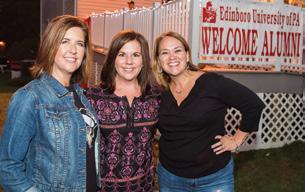
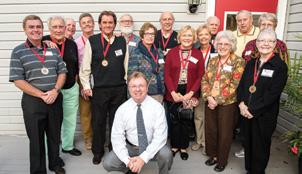
Engagement cordially invite you and your family to Edinboro University’s gathering at PNC Park. Join us for an exciting day of networking and fun as we cheer for the Pirates.

ADMISSION
$35 – includes corner box ticket (sections 130-132), co-branded Pittsburgh Pirates and Edinboro University baseball cap, Sean Rodriguez bobblehead (first 20,000 fans), and half-price pregame appetizers and beverages.
SCHEDULE
2:30 p.m.
Alumni and friends gathering with Edinboro University President H. Fred Walker at The Corner Bar (next to the rotunda entrance). Enjoy half-price appetizers and beverages.

4:05 p.m. Pirates vs. Diamondbacks
LEAVE THE DRIVING TO US!
Round-trip bus transportation will be available from Edinboro for the first 100 registered riders for $10 per person. Visit your.edinboro.edu/piratesbus to reserve your seat. This opportunity is co-sponsored by the Edinboro University Alumni Association and The Edinboro Hotel (Pat, ’94, and Stephanie, ’94, Hargest).
QUESTIONS?
Contact Cody Sharik from the Pittsburgh Pirates Office of Ticket Sales & Service at (412) 325-4778 or email cody.sharik@pirates.com.
To purchase tickets, visit www.Pirates.com/Edinboro and enter coupon code: SCOTS
